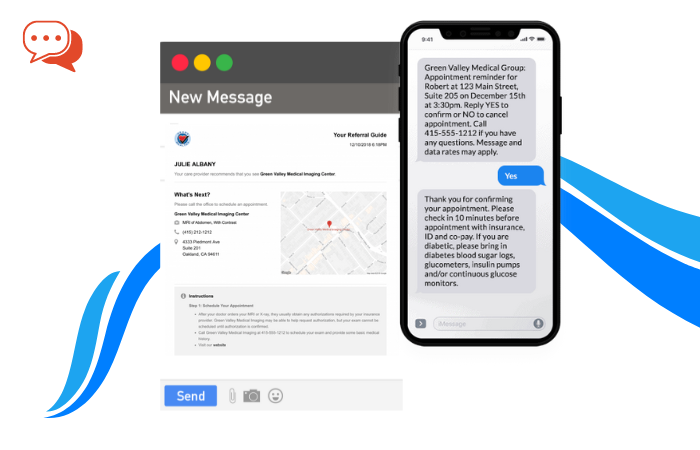The management of a healthcare facility’s IT needs are critical to the continuing operation of the organization and the ability to administer patient care. Often healthcare professionals lack the expertise to understand what their needs are in terms of fulfilling the duties of IT department. Executive leadership at a healthcare facility typically have a medical background and a strong network of contacts in healthcare, which doesn’t always make them the most equipped to set up an IT department. This often resorts to many issues with administering IT effectively.
These issues are widespread amongst the healthcare industry and therefore require that any healthcare facility or practice adequately prepare for the installation, maintenance and continued management of IT. If you’re a doctor or a hospital, follow this step-by-step guide to managing your IT needs effectively:
1. Define What Your IT Needs Are from the Beginning
Whether you’re the head of a practice of six doctors or in a leadership role at a large hospital network, the first step to setting up and continuing to manage your IT needs is defining your goals and areas of need from the very beginning.
If there’s any uncertainty as to what those goals should be, then hire an IT consultant to assist your facility through the process. This will ensure that your resources are allocated to the right areas of need and that their is a clear understanding of what goals will be achieved through a fluid IT operation.
Besides hiring an IT consultant to help temporarily manage the process, your organization has the option of also hiring an outside IT firm to manage all your IT, as well as beginning the process of hiring a completely in house IT team. Many healthcare facilities go with having an internal IT team due to the extensive familiarity and 24-7 care these areas of the organization require.
Establish a list of priorities to tackle first when it comes to all areas of your IT. The IT department is often seen as the unit that provides for all the computing, both hardware and software, requirements for an organization and more. The bigger idea is to strategically harness technology to make employees smarter and more productive, which hopefully would give you an edge over other caregivers when it comes to the quality of care delivered to your patients.
2. Hire an IT Manager, a Leader Who Can Build a Team
According to the Hiring Site, the Information Technology sector has added over 300,000 since 2010. It’s a competitive industry, which is all the more reason to be prepared to find the top talent to support your organization.
Once you’ve established a plan of action for your IT and what areas of your practice need help first, then it is important to find leadership for this department. Whether you’re hiring one person to manage your IT or a seasoned executive in IT, it is a process that should be approached strategically to make sure you find the right fit to lead this team and department.
- Know what you’re looking for.
A good start is to look for an IT specialist that is well-versed in database management, information security, system administration, and programming languages, amongst others. A potential hire should have a full understanding of Unix, Linux, Java, C++, Perl, MySQL and XML will be a huge benefit for your practice.
- Look for candidates in the right places.
Tap into the networks of others to get referrals, hire a recruiter versed in IT, post your opening on niche job boards and attend IT events to attract top talent.
- Interview aggressively.
Only meet with candidates that match the level of education, training and experience to suit the role, candidates should have a high level of enthusiasm and interpersonal skills to effectively communicate with the various departments and units that make up your organization, especially since they have to deal with hardware and software vendors helping supply your facility with necessary tools to provide world class care.
3. Build your IT Infrastructure for Each Department
After hiring the right leadership for your IT department, it’s time to allocate how IT will impact each area of your organization. This process may be simple for a smaller organization or very complex for a more extensive hospital or facility, nevertheless how support is delivered across the practice is crucial.
Treat your IT department like an internal agency that treats each department like one of its clients. At the initial stages of the IT department, it would help to come up with a service menu for its users, often addressing the most immediate needs of the business to ensure all staff and areas of the business are on the same page with what this new department can provide.
Start with the basics and work your way up with everything from managing printer servers all the way up to the network of EKG machines. Carefully assess these business requirements in order to come up with an IT roadmap for your organization that matches the needs and expectations of each individual and business group.
Managing the expectations and goals of each department and how they will interact with your IT team will help put the group on a path to success, since they interact with all decision makers across the organization.
4. Consider How Employees Factor into the Equation
Employee productivity is a particular area where you apply certain communication and collaboration tools that facilitate information exchange within and outside the company.
Consolidate your employee’s day-to-day tool use through strict policies of usage by your IT team. By setting up a reliable messaging system, you’re helping to build robust communication across the entire company.
You may opt to acquire an off-the-shelf solution like Microsoft Exchange or Lotus Notes for a full-blown product, or look at cost-effective alternatives like open source platform Zimbra. However, these options are becoming less common as many migrate to Google Applications.
The main concern about employees and how they fit in the equation for IT is security, compliance and an effective strategy to help them focus on the care they are providing instead of the tools and processes need to administer that care.
5. Use the Right Tools for the Job
Since there are multiple technology solutions in the marketplace, your organization must consciously adopt a stance in regards to new and emerging tools and technologies. An IT manager should ask if we really need the best-of breed-technologies, or should we wait for others to test them first?
It’s always a good approach to let other companies test for bugs and other issues to ascertain whether the tool or technology is worth adopting because it’s their spend for your benefit.
The reviews of new tools and technology by leading industry publications, peers and competitors could prove extremely valuable to your bottom line. If you have the ability to wait in some cases, try it.
Audit the different types of healthcare related tools you’ll need to better understand which provide the most value for the least amount of money. Your IT should also make the critical decision of using standardized tools or customizing them to the specific needs of the organization.
Again, the right tools for all IT needs help empower your staff to properly perform their roles without worrying about other aspects of their duties. This is a critical aspect to the type of care your practice is able to provide its patients.
6. Stay Ahead of Industry Developments
Managing your technology assets and keeping track of your company’s investments in IT is a function shared by the IT department with the finance and admin departments. This includes updating company-owned hardware and most importantly, software licenses with the necessary industry updates and regulatory concerns of the U.S. Department of Health and Human Services.
By keeping tabs on a company’s technology properties, management is able to stay in the loop of the actual cost of technology and therefore has a sound understanding of what to expect from the IT department when it comes to their ongoing needs.
Industry developments are hard to keep up with, especially if it isn’t your expertise, hence why it is absolutely critical that you’re hiring top IT talent from the start to make sure your facility as managed correctly from start to finish.
7. Information Security is Crucial
As you run your healthcare facility, you accumulate vast amounts of information about your patient, costs, revenue, insurance related data and more.
Your IT team should prevent the organization of data in a manner that’s easy to digest by your staff, making it available when and where it counts, you effectively make your employees’ decision and actions smart and calculated to better equip them to complete their job and deliver care.
Not to mention the highly sensitive nature of all your patient’s data that must be completely secure. This should be one of the top priorities of the IT department to ensure this sensitive information is stored and protected correctly at all times.
The secured information should be searchable, and able to handle the use by multiple staff members at once performing different queries with the data sets. Setting up simple to use dashboards across devices can benefit each staff member, regardless of what task they are performing.
Set up a checklist of the security features in place to protect your organizations data to consistently review and confirm everything is in place to secure sensitive information. This includes firewalls, anti-virus software, clear policies on how to use software and devices during and off of work hours and extensive training for employees on the best practices for sending, receiving and storing information.
According to a recent study from Intel on healthcare security, these are the latest trends to be aware of when it comes to your sensitive data:
Medical Trends
• Migration to electronic health records
• Health information exchange and data proliferation
• Mobile health
• Regulations, breach notification rules, and breaches
• Cost-reduction pressure
Consumer Trends
• Consumerization/bring your own device
• Social media
IT and Security Trends
• Cloud computing
• Sophisticated, targeted malware attacks
• Big data and evolving research requirements
Healthcare organizations of all sizes face a critical need to manage and integrate clinical, financial and operational data due to the above threats that are constantly evolving and multiplying. Today the emphasis on patient care and good outcomes has never been higher, which is wonderful for patients and require healthcare providers to step up their commitment to providing the best treatment, which the security of sensitive information can help certainly ensure.
As these needs continued to grow to new levels, your facility no matter how small or large needs a hospital information system (HIS) that can keep pace. Many hospital information system deliver a single database that allows you to build a single system to meet your HIS and budgetary requirements to protect your data and budget.
Using a single-vendor approach eliminates the inefficiencies and complexities frequently found with multi-vendor solutions when it comes to the security of your information.
An IT department is well worth the investment in time, spend and resources at a healthcare facility. The informed management of all your hardware, software, information and related technologies is well worth the cost of saving your organization time, money and much needed resources that should all be focused on improving patient care.
What do you think? What issues plague your IT department and how should you best address these needs? What tips can you share? Please leave your thoughts in the comments below.
Images courtesy of Eddie Lobanovskiy, Philippe Mignotte, Funnel Design Group, Rei Kirie, Sanadas Young, Oykun, The Guardian.com and Luke Lisi.


















